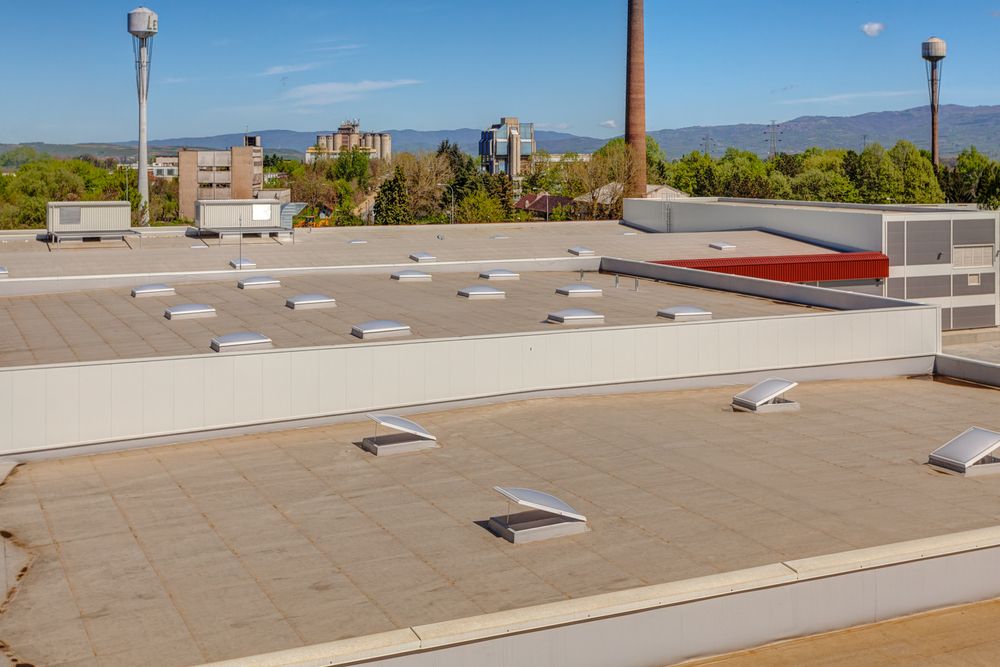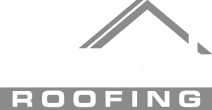
Why Do Commercial Buildings Have Flat Roofs?
A Closer Look at the Reasons Behind Flat Roofs in Commercial Buildings
Flat roofs are a common sight in many commercial buildings. They offer a range of benefits that make them a popular choice for property owners and developers. This article will explore the primary reasons behind the prevalence of flat roofs in commercial buildings, highlighting their cost efficiency, space utilization, easy maintenance, durability, and longevity. Understanding these advantages can help guide decision-making when it comes to choosing a roofing system for commercial properties.
Overview of flat roofs in commercial buildings
Flat roofs are a common choice for many commercial buildings due to their practicality and functionality. They provide a horizontal surface that allows for easy installation of HVAC systems, solar panels, and other equipment. Additionally, flat roofs offer space utilization opportunities, such as rooftop gardens or recreational areas, and are cost-effective in terms of construction and maintenance. Their durability and longer lifespan are also attractive features for commercial property owners.
Benefits of flat roofs in commercial buildings
Flat roofs in commercial buildings offer several benefits. They are cost-effective, with lower construction and maintenance costs compared with sloped roofs. The flat surface allows for easy installation of equipment and systems, such as HVAC or solar panels. Flat roofs also provide space utilization opportunities, like rooftop gardens or recreational areas. Their durability and longer life expectancy make them an attractive option for commercial property owners. Consider these advantages when choosing a roofing system for your commercial building.
1. Cost Efficiency
The cost efficiency of flat roofs in commercial buildings is a major advantage. The flat surface allows for better energy efficiency, reducing heating and cooling costs. These cost benefits make flat roofs an attractive choice for business owners, providing long-term savings.
Lower construction and maintenance costs in commercial roofs
Flat roofs in commercial buildings offer significant cost advantages when it comes to construction and maintenance. Due to their simple design and fewer materials required, flat roofing systems are generally more affordable to install compared to pitched roofs. Additionally, the maintenance and repair costs are lower because access to the roof is easier, and there are no steep angles or intricate features that need attention. This cost efficiency makes flat roofs a smart choice for commercial property owners looking to save on long-term expenses.
Energy efficiency and reduced heating/cooling costs
Flat roofs in commercial buildings offer energy costs benefits, resulting in reduced heating and cooling costs. With proper insulation and reflective materials, flat roof designs can help maintain a more consistent indoor temperature, reducing the need for excessive heating or cooling. This leads to significant energy savings and lower utility bills for commercial property owners. Additionally, the absence of pitched angles on flat roofs reduces heat absorption, further contributing to energy efficiency.
2. Space Utilization
Utilizing flat roofs in commercial buildings offers an opportunity for space utilization. These roofs can be transformed into additional functional areas such as rooftop gardens, recreational spaces, or seating areas for employees and visitors. This not only maximizes the usable space of the building but also provides a pleasant environment for relaxation or social events. It is a valuable feature, particularly in densely populated areas where space is limited.
Utilizing flat roofs for additional purposes such as rooftop gardens or recreational areas
Utilizing flat roofs in commercial buildings provides an opportunity for additional purposes such as rooftop gardens or recreational areas. These extra spaces can offer a green and relaxing environment for employees and visitors, providing a break from the busy work environment. They also contribute to improving air quality and reducing the urban heat island effect, especially in commercial district.
Maximizing space in densely populated areas
Maximizing space in densely populated areas is crucial for commercial buildings. Flat roofs provide an ideal solution as they can be used for additional purposes, such as sky gardens or recreational areas. By utilizing these valuable spaces, businesses can optimize their available area and create inviting environments for employees and visitors. This not only provides additional space but also enhances the overall functionality and aesthetic appeal of the building.
3. Easy Maintenance and Accessibility
With flat roofs, maintenance becomes easier and more accessible. Additionally, heavy equipment and systems can be installed on flat roofs more easily, as there are no steep angles or sloping surfaces to contend with.
Simple maintenance and easier access for roof repairs and inspections
Flat roofs offer the advantage of simple maintenance and easier access for repairs and roof inspections. The flat surface provides a stable platform for walking and inspecting the roof, making repairs and inspections simpler and safer. This accessibility allows for efficient maintenance and ensures that any issues can be addressed promptly, helping to prolong the life span of the roof.
Installation of equipment and systems on flat roofs
One of the advantages of flat-roofed buildings is the ease of installing equipment and systems. Flat surfaces provide a stable platform for placing HVAC units, solar panels, and space for equipment storage. The spaciousness and accessibility of flat roofing make it simpler for technicians to install and maintain these systems. This flexibility in installation helps optimize the functionality and efficiency of commercial buildings.
4. Durability and Longevity
Flat roofs are common choice in commercial buildings due to their durability and longevity. Their strong structure allows them to resist damage and potential leaks, ensuring the integrity of the building. Additionally, flat roofs have a longer lifespan compared to other types of roofing, reducing the need for frequent replacements and saving on maintenance costs in the long run. When it comes to durability and longevity, flat roofs are an excellent choice for commercial buildings.
Strength and resilience of flat roofs in withstanding various weather conditions
Flat roofs in commercial buildings are known for their strength and resilience in withstanding various weather conditions. They are designed to withstand various weather conditions, including heavy rain, snow, and high winds, without sustaining damage or leaks. The robust structure of flat roofs ensures the integrity of the building, providing long-term protection. Its durable material makes flat roofs an excellent choice for commercial buildings, especially in areas with unpredictable weather patterns.
Longer lifespan compared to other types of roofs
Flat roofs in commercial buildings have a longer lifespan compared to other types of roofs. With proper maintenance and regular inspections, flat roofs can last for decades. Flat roofing materials, such as Thermoplastic Polyolefin (TPO) membranes or EPDM roofs, are designed to withstand exposure to the elements and resist damage. This longevity ensures that commercial building owners can enjoy reliable protection for their property for years to come.
Considerations when choosing a commercial roofing system
When selecting a roofing system for commercial buildings, there are several considerations to keep in mind. It’s important to assess factors such as the climate, building usage, maintenance requirements, and budget.
Consulting with a professional roofing contractor nearby, such as Colonial Roofing, can provide valuable insights and guidance in choosing the best roofing system for your specific needs.
Conclusion
The prevalence of flat roofs in commercial buildings is not just a common sight but a strategic choice offering a multitude of benefits. From cost efficiency and space utilization to easy maintenance, durability, and longevity, flat roofs provide a comprehensive solution for property owners and developers. Understanding these advantages becomes crucial when deciding on a roofing system for commercial properties.
As you consider the best roofing system for your commercial building, it’s essential to weigh factors like the climate in your area, planned usage, your maintenance requirements, and your budget.
If you’re looking for roofing services in North Florida, Colonial Roofing is your trusted local partner. Colonial Roofing’s experienced team can guide you through the decision-making process and provide expert installation and maintenance services.
The benefits of flat roofs extend beyond the structural aspects—they contribute to long-term cost savings, enhanced functionality, and aesthetic appeal. As you ponder the roofing options for your commercial property, consider the advantages that flat roofs bring to the table. What additional possibilities could your roof space unlock for your business?
Contact Colonial Roofing today and explore the potential of your property. Your journey to a durable, cost-effective, and functional roofing solution begins here.
